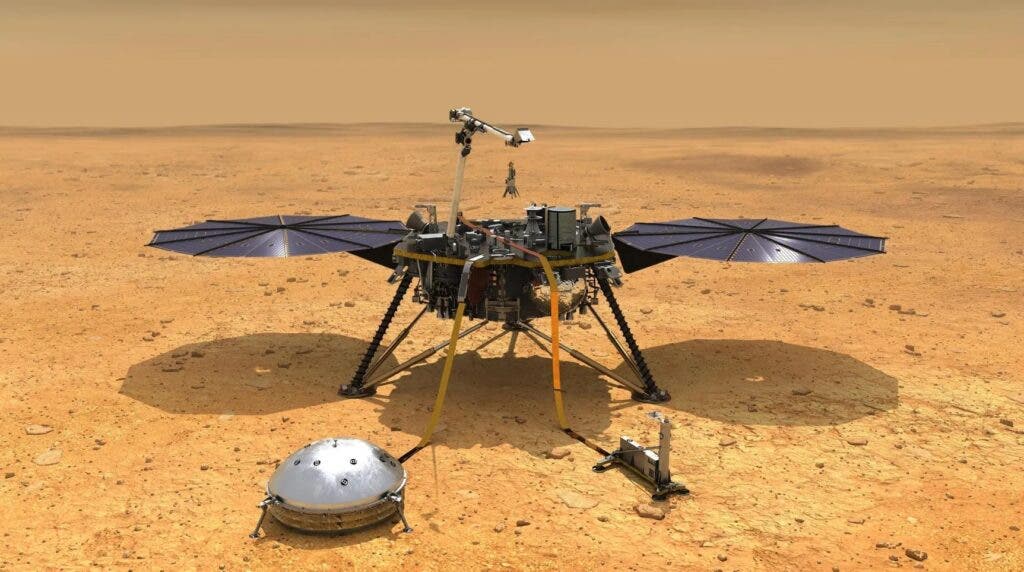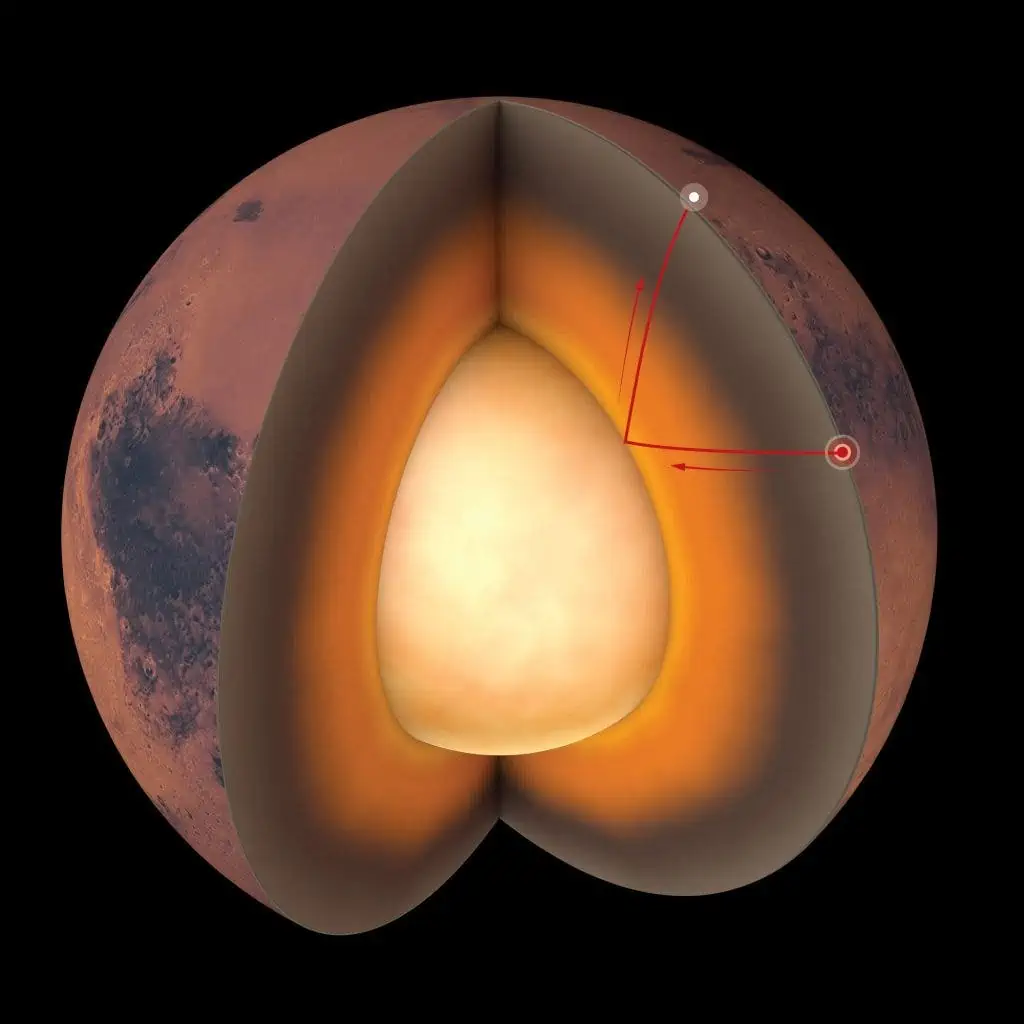
After three years of listening to the soft rumbles of Mars, NASA’s InSight lander has just felt the biggest “marsquake” yet. According to NASA’s Jet Propulsion Laboratory (JPL), the lander’s seismometer picked up a tremor with a magnitude of 5 on the Richter scale — quite small and rather uneventful here on Earth, but apparently one of the strongest we’ll get to see on Mars.
The most powerful extraterrestrial tremor recorded so far
Earthquakes are caused when tectonic plates — the moving, floating pieces of Earth’s crust — collide or rub together, sometimes leading to the formation of mountains and volcanoes in the process. Mars, however, doesn’t have plate tectonics, with its crust composed of a single solid plate.
Nevertheless, Mars does experience quakes, and quite frequently too. Since 2018, InSight has measured over 1,300 tremors, which are believed to be caused by fractures in the crust caused by the cooling of the planet’s molten core. Additionally, researchers at the Australian National University (ANU) and the Chinese Academy of Sciences claim that moving molten rock beneath Mars’ surface could also be contributing to the marsquakes.
Regardless of what causes them, marsquakes can reveal many previously hidden things about the Red Planet. By sensing these seismic waves and pinpointing their location of origin, scientists can figure out a lot of things about Mars’ interior, such as the size and density of the mantle and core.

Before this month, the biggest marsquake detected by InSight was a magnitude 4.2 detected in August 2021. Since the Richter scale is logarithmic though, the new record-breaking magnitude 5 marsquake is six times stronger. This new milestone will likely help scientists in the future learn more things about the interior of Mars that may help answer some of the most pressing mysteries, such as its lack of plate tectonics and the nature of its core (it could be solid like Earth’s or liquid).
“Since we set our seismometer down in December 2018, we’ve been waiting for ‘the big one,’” said Bruce Banerdt, InSight’s principal investigator at JPL, in a statement. “This quake is sure to provide a view into the planet like no other. Scientists will be analyzing this data to learn new things about Mars for years to come.”
Previously, researchers at ETHC Zurich used data on Martian tremors to estimate that the entire Martian crust has an average thickness of between 24 and 72 kilometers. The InSight data also revealed important information regarding the structure of the Martian crust, which seems to be composed of at least three distinct layers before reaching the mantle.
Within just three years of operation, NASA’s InSight is already answering important questions about the crust, mantle, and core of Mars that scientists had been speculating about for decades, with more yet to come.
Unfortunately, the lander is experiencing some serious technical difficulties. Since InSight first arrived on the planet, dust storms have intensified, which have blocked its solar panels. After a huge local dust storm in January, InSight was put into safe mode to conserve energy. The storm passed and later InSight was able to record this record-breaking magnitude 5 marsquake. But it wasn’t out of the woods just yet. Another powerful dust storm struck the lander on May 7 and the lander has reached dangerously low power levels once again.









